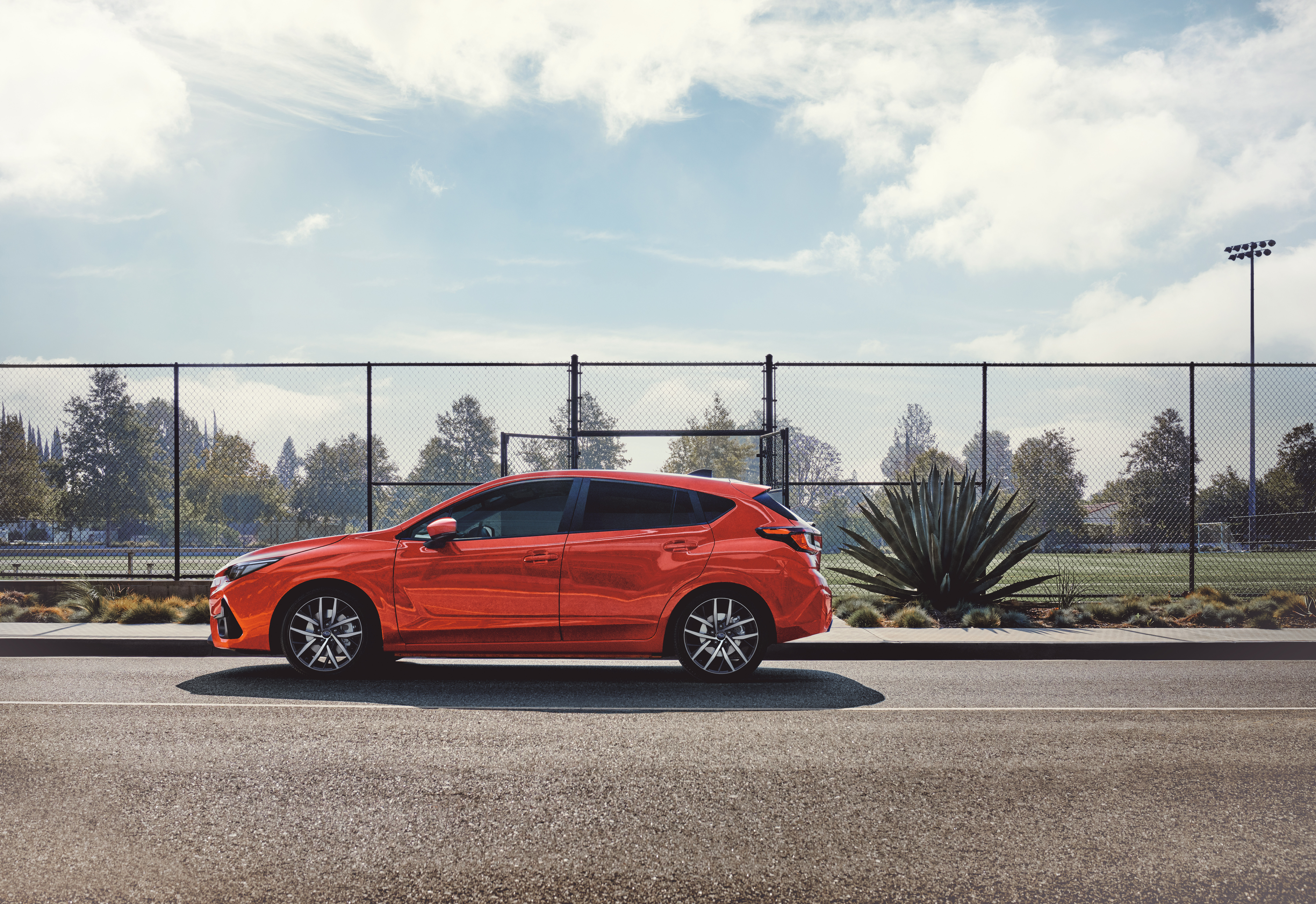Chris Riley tests the 2024 Subaru Impreza small hatch with pricing, specs, ride and handling, safety, verdict and everything the over-50 driver needs to know.
Summary: Some reviewers have been less than kind about the new Subaru Impreza, but we found it to be a well-balanced, sensible package. It stacks up well against its opposition and has the important advantage of all-wheel drive.
2024 Subaru Impreza 2.0S small hatch
Price: $37,990 (plus on road costs)
Warranty: Five-years, unlimited km, 12-month roadside assist
Safety: not rated (ANCAP testing expired Dec 2023)
Build location: Japan
Engine: 2.0-litre naturally aspirated four-cylinder petrol
Power: 115kW @ 6000rpm
Torque: 196Nm @ 4000rpm
Transmission: CVT auto, symmetrical all-wheel drive
Body: 4490mm (long); 1780mm (wide); 1480mm (high)
Kerb weight: 1458kg
Ground clearance: 130mm
Braked towing capacity: 1200kg
Boot capacity: 291 litres
Wheels: 18-inch alloy
Tyres: 225/40 R18
Spare wheel: space saver
Turning circle: 10.6m
Fuel tank: 50 litres
Official consumption: 7.5L/100km (91 RON unleaded fuel)
Consumption on test: 8.7L/100km (see text)
seniordriver consumption on test: 7.5L/100km (308km)
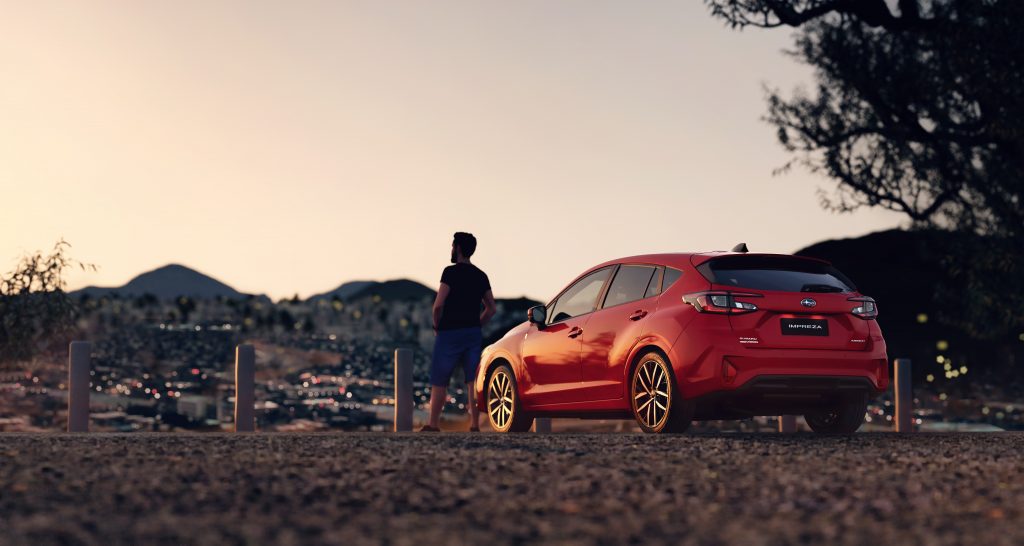
[review]
While many manufacturers have ditched their hatches in favour of SUVs, Subaru continues to offer the Impreza.
Mind you, it dropped the Liberty sedan back in 2020, so nothing is set in stone.
And the sedan is no more – just the hatch this time.
Subaru says the new sixth generation Impreza is sportier and more versatile than ever.
But we’re not sure what this claim is based upon, given its the same engine and transmission as before.
Let’s find out.

What’s it cost?
Released late last year, the new 2024 model is a little larger and looks a little different of course.
There are three models: 2.0L, 2.0R and 2.0S, priced from $31,490.
The better equipped 2.0R is $34,990, while top of the range 2.0S (the subject of our test) is $37,990 – all prices before on-road costs.
All three are powered by the same 2.0-litre naturally aspirated petrol engine, with the same CVT-style transmission and all-wheel drive (sorry, “symmetrical” all-wheel drive).
Inside, we’re told a carefully redesigned cabin takes the driving experience to a whole new level, leaving both drivers and passengers impressed. Who writes this stuff?
Kit in the entry model includes 17-inch alloys, cloth seats, dual-zone air conditioning, adaptive cruise control, smart key and push-start ignition, dusk-sensing LED headlights and rain sensing wipers, rear parking sensors and power-folding door mirrors.
Impreza 2.0R and 2.0S add larger 18-inch alloys, heated front seats, power-adjust driver seat, auto high beam, front cornering lights and an auto-dimming rear-view mirror.
2.0S ups the ante with leather enhanced trim, heated front seats, satellite navigation and an 80s-sized electric sunroof.
A space saver spare is provided.
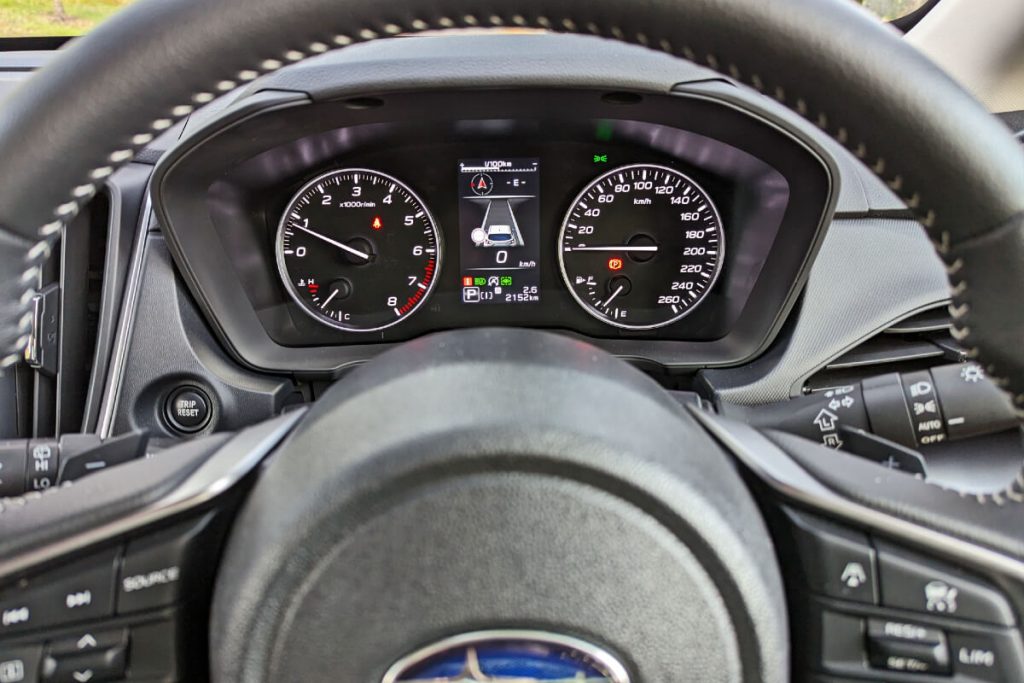
Impreza is covered by a five-year/unlimited kilometre warranty period, with 12-month complimentary roadside assistance.
Infotainment consists of an impressive 11.6-inch portrait-style touchscreen, with AM/FM and DAB+ digital radio, wireless Apple CarPlay and Android Auto, wireless Qi smartphone charging and USB-A and USB-C ports.
2.0R and 2.0S models add rear USB ports.
First available in the new Crosstrek, 2.0R and 2.0S feature a panoramic 360-degree view monitor.
A 3-D bird’s-eye view is generated from all four cameras around the vehicle.
Six-speaker audio is standard, while 2.0S scores a premium Harman Kardon 10-speaker audio system.
Sad to say, Impreza no longer carries a five-star safety rating.
It expired in December and the car will need to be re-tested.
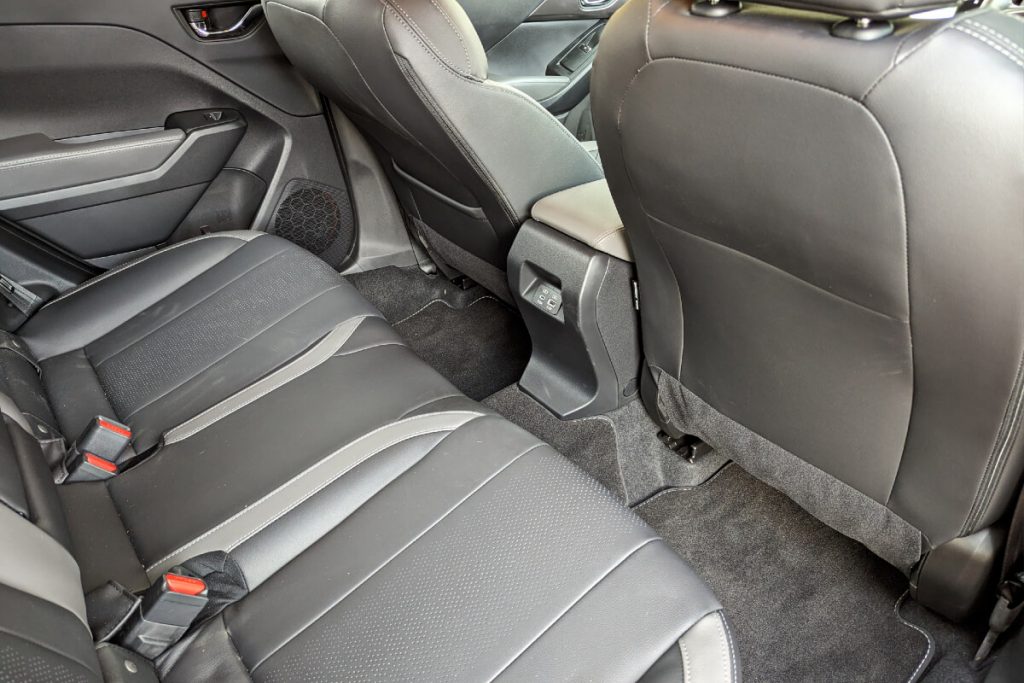
The latest model comes with nine airbags, a reversing camera and autonomous emergency braking, together with reverse automatic braking.
The latest generation Subaru EyeSight driver assist system features an improved stereo camera and a new wide-angle monocular camera, which offers a significantly wider field of view, speed sign recognition and lane centring function.
This additional camera also enhances its ability to recognise pedestrians and bicycles when the vehicle is entering an intersection at low speed.
New to the Impreza range, all variants are equipped with Subaru’s leading-edge DMS which carefully watches over the driver’s seat for signs of drowsiness, lack of attention on the road or fatigue is detected.
If any of these signs are identified, a warning is displayed on the multi-Information display (MID) and infotainment screen.
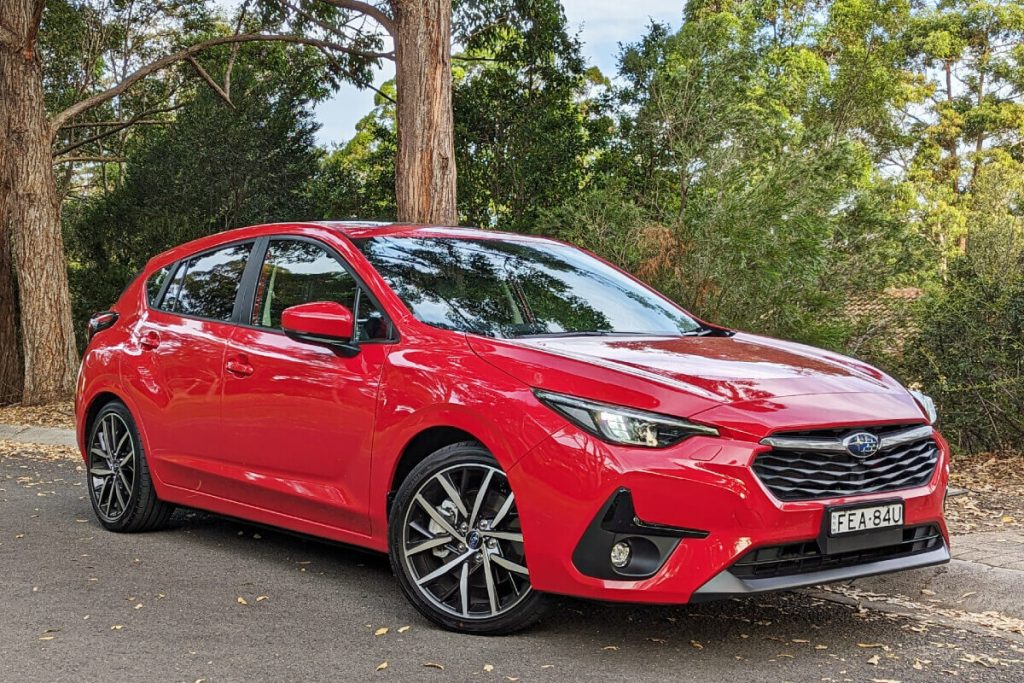
What’s it go like?
There’s no hybrid, although one is offered overseas.
But given its performance in Crosstrek, it’s probably not worth the effort.
Impreza gets the same old naturally aspirated, direct injection 2.0-litre boxer engine as before.
It delivers 115kW of power at 6000rpm and 196Nm of torque from 4000rpm, and has been the fallback position for over 10 years.
Power is fed to all-four wheels via a CVT-style transmission with eight steps or gears accessible via steering wheel mounted paddle shifts.
Although described as symmetrical all-wheel drive, this does not mean the car operates in all-wheel drive mode all the time.
It simply means that it can feed torque equally to the front or rear wheels when required.
SI-Drive offers two drive modes: Intelligent (I) and Sport (S) mode.
With a 50-litre fuel tank, fuel consumption is a claimed 7.5L/100km and it takes standard 91 unleaded.
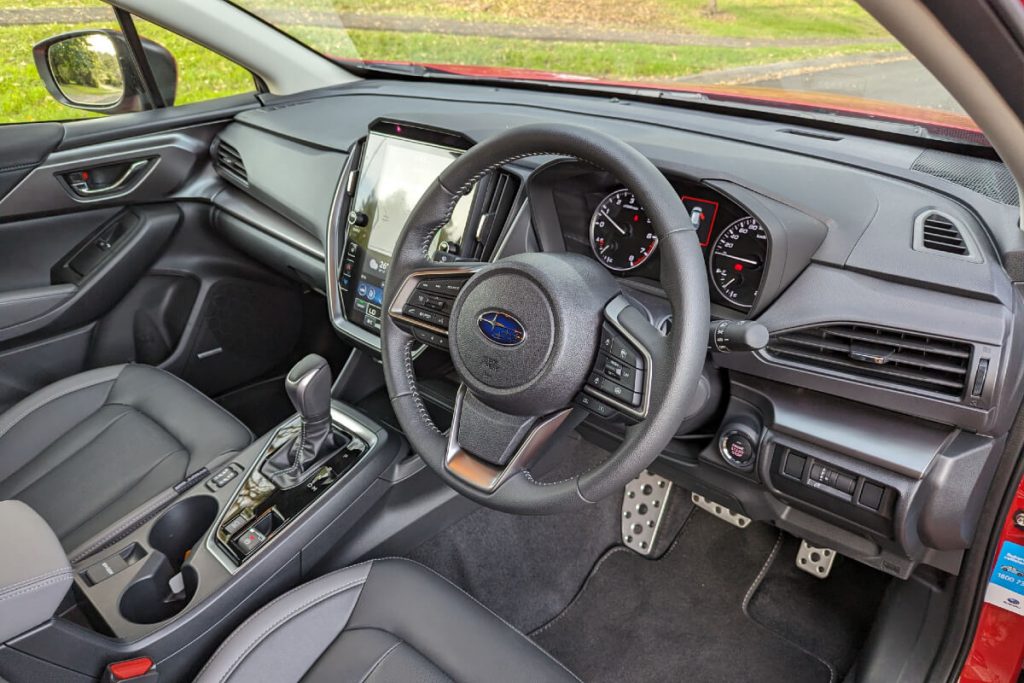
Although it’s 15mm longer, 6mm wider and 1mm higher than the previous model, the wheelbase remains exactly the same 2670mm – that means no extra room inside.
Or it would if the designers hadn’t nicked a bit of boot space to provide rear seat passengers with some extra space.
Longer cushions provide greater support for the back and knees.
Some rear aircon outlets might have been nice?
The seats have been redesigned and so has the dash to accommodate the large, impressive-looking portrait touchscreen as seen in other models.
It’s seen the demise of the odd third information screen that used to sit atop the dash.
The CD player has gone too.
Can’t say we’ll miss either.
The seats are apparently fixed directly to the chassis, providing a better driving position, but the seating position feels quite low and it makes entry and exit more difficult than it should be.
Subaru might have given this some thought, given that the buyer demographic for this car is probably over 50 years of age.
Despite the large touchscreen, physical controls have been retained for volume, radio tuning and temperature settings, as well as the heated seats.
Fan speed however is controlled from the screen, but is always on display so easy to access.

While the rest of the automotive community is moving to digital instrumentation, even the top of the range 2.0S retains old style analogue dials, with a small informational between them.
Not the best way to win friends and influence people.
Touchscreen graphics are crisp and colourful, with large icons for the different apps.
But the space devoted to the reversing camera is relatively small and although it does the job, the image becomes blurry and difficult to see at night.
Subaru has always provided excellent audio and the 10-speaker Harman Kardon audio system in this model is a keeper.
Wireless Android Auto works flawlessly.
But you don’t buy a car for the audio, you buy it for the way it drives.
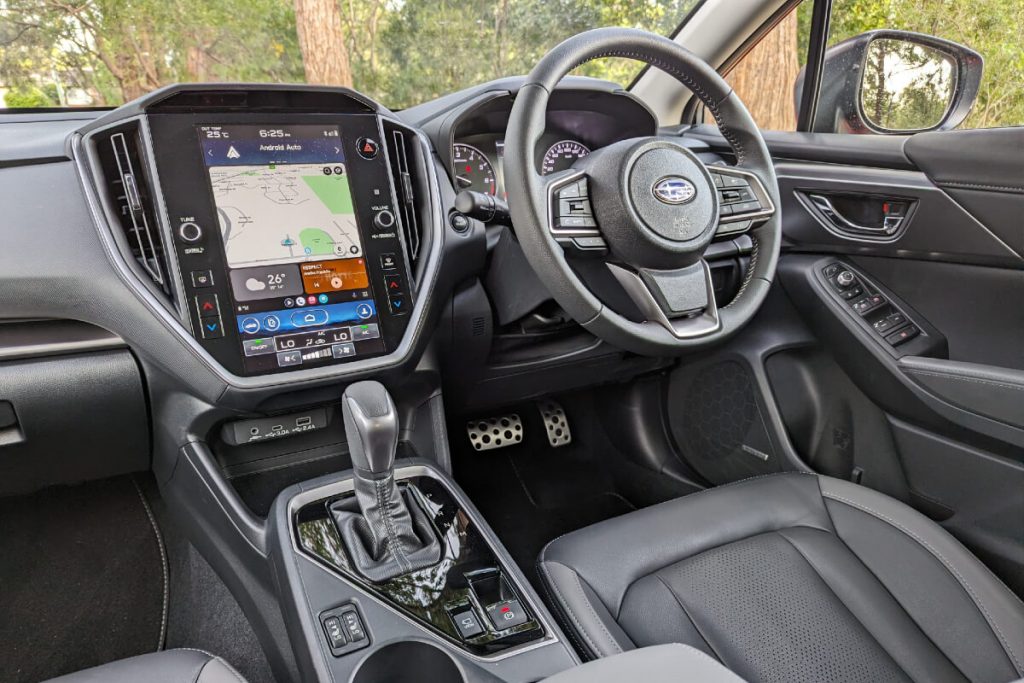
The basics are there, but we found the performance in our test vehicle a little deceiving.
Steering is sharp, the ride and handling are excellent and it tackles corners with the utmost confidence.
And, being all-wheel drive (when it’s required), it’s going to be sure-footed in wet weather.
Pedalling the Impreza around town, with light throttle application, it presents as reasonably responsive.
It’s only when you ask it the question that it becomes unimpressive. When you punch the accelerator hard and demand it to respond in kind, you could come away disappointed.
So it kind of depends on whether you’re looking for a WRX, or whether you just want something safe that will get from A to B.
If it’s the latter, the Impreza fits the bill.
On a final note, however, fuel consumption is overly high for a car of this size and weight.
Rated at 7.5L/100km, we were getting a high 8.7 around town which is frankly unacceptable for a car of this size.
What we like
- Nice wheels
- All-wheel drive
- Easy to drive
- Harman Kardon sound
What we don’t like
- Too low for oldies
- Engine lacks punch
- Front often scrapes
- No rear aircon outlets
- Easy to confuse trip and start buttons
What over-50 drivers need to know
Older drivers seem drawn to Subaru.
But, all in all, the new Impreza is a bit ho-hum.
The big changes are in the cabin with the addition of the large touchscreen.
It feels like Subaru has put the hatch in a holding pattern, pending a decision on its future.
Crosstrek performs the same function in a more desirable SUV format, so Impreza might not be around for much longer.
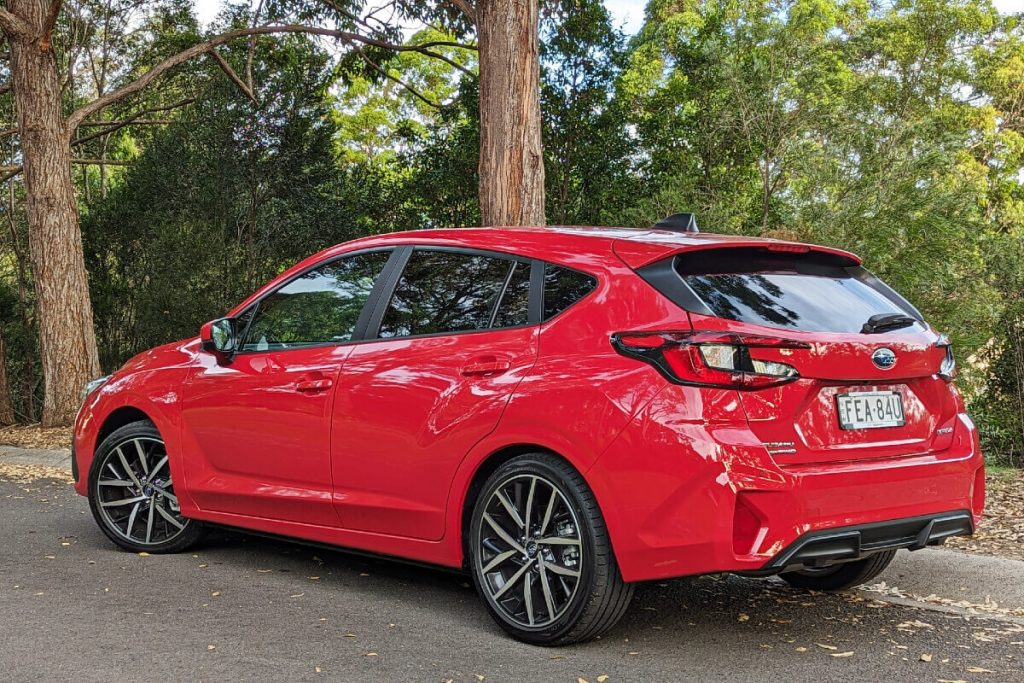
seniordriver comments
We’ve read a number of reviews of the latest iteration of the Subaru Impreza and, like Chris’ review, many of them have been quite tepid and slightly critical. Perhaps the kindest description would be “damned with faint praise”.
To be honest, we don’t understand the lack of enthusiasm.
Admittedly, the Impreza is no barnstormer, but not everyone wants high performance for everyday use, and the Impreza never seems to be lacking under normal circumstances.
We did discover one anomaly. When we collected “our” car, it was telling us we had 510km until empty. To be honest, we thought this was a little disappointing. However, things quickly got worse. Six kilometres down the road, the readout was indicating 410km to empty. After 15km, we were looking at 360km to empty, and starting to be a little concerned. However, after driving 100km, the indicated range was back up to 540km to empty, or a range from full of a much more reasonable 640km.
It was a salutary reminder that range predictions can vary wildly, and that you’d be wise to treat them with some healthy scepticism.
Once we were over that hurdle, we enjoyed out time in the Impreza. It is well finished (like all Subarus) and it’s easy to see why over-50 drivers have always had a healthy respect for Subaru.
Naturally, we were a little nonplussed to learn that the ANCAP five-star rating had expired, so the Impreza is unrated, unless Subaru decide to retest it, which at this time appears highly unlikely.
Entry and exit to the cabin, as Chris points out, is made more difficult than it needs to be, due to the low mounting of the seats. We’d take this small inconvenience every time in the interests of a better driving position, but not all older drivers have that option – old bones don’t appreciate low seats!
Fuel consumption is another issue. Chris managed a less-than-impressive 8.7L/100km (with the proviso that this was mostly around town). In the modern world, owners should expect better. On the other hand, we managed 7.5L/100km, which is exactly the official figure. Admittedly, more of our driving was done on country roads, so this would definitely have had an influence.
By our reckoning, the Impreza is sharply priced, too. It compares favourably to the Hyundai i30 ($24,000 to $30,800 for the two-litre models), the Kia Cerato two-litre hatch ($27,060 to $32,210) and the Mazda 3 hatch ($30,470 to $34,670 for the two-litre variants).
